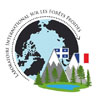Forêts Froides

5è rencontre annuelle du Laboratoire International de Recherche sur les Forêts Froides
Lire plusLa Chaire a pour mission d'assurer le développement et la qualité des activités de recherche, formation et transfert technologique nécessaires à l'élaboration et à l'application de stratégies et de pratiques d'aménagement forestier durable. En collaboration avec ses partenaires régionaux, elle fixe les priorités de recherche et participe à des actions concertées répondant aux grandes problématiques régionales et nationales.
jan 22
Colloques du SCF-CFL
Maxence Martin
10h30
fév 12
Colloques du SCF-CFL
Richard Fournier
10h30
fév 17
Rendez-vous de la connaissance en aménagement forestier durable
MRNF
13h00 à 16h45
fév 19
Colloques du SCF-CFL
Alexis Achim
10h30
mar 05
Colloques du SCF-CFL
Christian Hébert
10h30
Martin Alcala Pajares, Annie DesRochers, Miguel Montoro Girona. Impacts of partial cuts on aboveground carbon stocks in esker forests 2026. For. Ecol. Manage. 123355
DOI : 10.1016/j.foreco.2025.123355
Mialintsoa Aroniaina Randriamananjara, Abhishek Mani Tripathi, Annie DesRochers. Effects of spacing and site quality on tree growth, stand productivity, and biomass allocation of hybrid poplar (Populus spp.) plantations 2026. Biomass and Bioenergy 108735
DOI : https://doi.org/10.1016/j.biombioe.2025.108735
Vous pouvez voir en rediffusion les présentations qui ont eu lieu dans le cadre des midi-foresterie de l'UQAT.